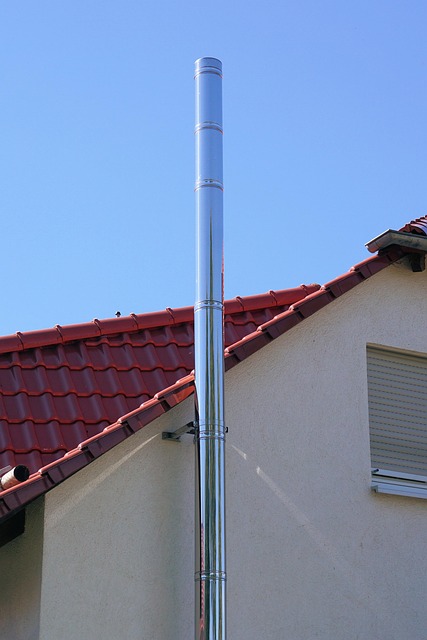Industrial air curtains are advanced ventilation tools that create airtight seals at large openings in commercial spaces, saving energy costs and enhancing HVAC system efficiency. They effectively contain contaminants and improve safety, particularly in cold storage facilities. By integrating these curtains into entrance systems, industrial kitchens can manage high humidity and heat while optimizing worker comfort and reducing HVAC load. Implementing air curtains requires assessing kitchen layout, choosing suitable models, and following proper installation guidelines for optimal performance in large opening protection.
Industrial kitchens face unique challenges when it comes to ventilation, with high-temperature areas and steam creating significant strain on exhaust systems. This is where industrial air curtains step in as a revolutionary solution. These powerful yet controlled air barriers efficiently contain hot, moist air, reducing the workload on ventilation systems. By strategically placing air curtains at entry points, kitchens can maintain optimal temperature and humidity levels, enhancing food safety and energy efficiency.
- Understanding Industrial Air Curtains: Their Role and Benefits
- How Industrial Air Curtains Alleviate Ventilation Strain in Kitchens
- Implementing Air Curtains: A Step-by-Step Guide for Optimal Kitchen Ventilation
Understanding Industrial Air Curtains: Their Role and Benefits

Industrial air curtains are specialized ventilation solutions designed to provide a robust barrier at large openings in industrial kitchens and similar commercial spaces. Their primary role is to prevent the loss of heated or cooled air, thereby reducing the strain on existing HVAC (heating, ventilation, and air conditioning) systems. By creating an airtight seal, these curtains help maintain optimal indoor climate control, ensuring energy efficiency and cost savings.
Beyond their energy-saving capabilities, industrial air curtains offer enhanced safety and productivity. In manufacturing plants, warehouses, and factories with frequent loading dock activities, these air barriers can effectively contain contaminants, dust, and even noxious gases. This is particularly beneficial for cold storage facilities where maintaining a controlled environment is crucial. By integrating heavy-duty air curtains into their entrance systems, industrial settings can improve overall workplace conditions while optimizing the performance of their climate control mechanisms.
How Industrial Air Curtains Alleviate Ventilation Strain in Kitchens

Industrial kitchens face unique challenges when it comes to maintaining optimal conditions for both food preparation and worker comfort. The demand for efficient ventilation systems that can handle high-humidity environments, intense heat, and constant air flow is paramount. Here’s where industrial air curtains step in as a game-changer. These specialized devices are designed to alleviate the strain on existing HVAC (heating, ventilation, and air conditioning) systems by creating localized zones of clean, controlled air at entry points.
By using powerful yet precise air streams, industrial air curtains act as heavy-duty air barriers, effectively sealing off large openings like warehouse entrance protection or loading dock access. This prevents hot, humid kitchen air from escaping while keeping cold storage barriers and factory entrance heating in check. The result is improved industrial climate control, ensuring workers remain comfortable and reducing the load on already taxed industrial HVAC systems.
Implementing Air Curtains: A Step-by-Step Guide for Optimal Kitchen Ventilation

Implementing industrial air curtains is a strategic move to enhance kitchen ventilation and create a more comfortable working environment. Here’s a step-by-step guide for optimal results:
1. Assess Your Kitchen Layout: Begin by evaluating your industrial kitchen’s layout, identifying areas with high heat generation and significant foot traffic. These are the primary zones where installing air curtains will have the most impact. Consider factors like equipment placement, workflow patterns, and any existing ventilation systems.
2. Select Appropriate Air Curtain Types: Choose from a range of heavy-duty air curtain options designed for industrial settings. These can include warehouse entrance protection models, cold storage barriers, or loading dock air curtains. The right type will depend on your specific needs, such as whether you require heat retention (factory entrance heating) or precise climate control using industrial HVAC systems.
3. Measure and Install: Once you’ve selected the suitable air curtain model(s), take accurate measurements of the entry points. Ensure proper installation by following the manufacturer’s guidelines. Securely mount the air curtains, ensuring they are aligned with the door frames for optimal performance as large opening protection.
Industrial air curtains have emerged as a game-changer in optimizing ventilation systems within industrial kitchens. By understanding their role and benefits, such as alleviating strain on existing vents, we can significantly enhance kitchen efficiency. Implementing these curtains through a structured step-by-step guide ensures optimal ventilation, leading to improved working conditions for folks in these bustling environments. In today’s digital era, embracing innovative solutions like industrial air curtains can revolutionize kitchen dynamics, fostering a symphony of enhanced productivity and comfort.
